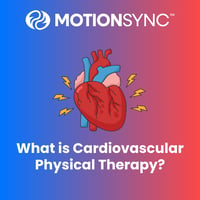Lumbar Stenosis: Your Guide To Recovery

Lumbar stenosis is a common spine condition that occurs when the spinal canal narrows, putting pressure on the nerves in the lower back. This can lead to pain, numbness, weakness, and mobility issues, making everyday activities more challenging.
While lumbar stenosis is often associated with aging, it can affect individuals of all backgrounds. Fortunately, with the right combination of physical therapy, posture correction, and targeted exercises, many people can manage symptoms effectively and maintain an active lifestyle. Read on to learn about the causes, symptoms, and expert-backed treatments for lumbar stenosis.
What Is Lumbar Stenosis?
Lumbar stenosis occurs when the spaces in the lower spine (lumbar region) become too narrow, compressing the spinal cord and nerves. This narrowing is most commonly due to age-related degeneration, but other contributing factors include:
- Herniated discs – Bulging or ruptured discs can press on the nerves.
- Arthritis – Osteoarthritis can lead to bone spurs that reduce spinal space.
- Thickened ligaments – Ligaments in the spine can stiffen and enlarge, crowding the spinal canal.
- Spinal injuries – Trauma or past surgeries may lead to stenosis.
- Congenital conditions – Some individuals are born with a narrower spinal canal.
For a comprehensive explanation of lumbar stenosis, visit Cedars-Sinai’s guide to spinal stenosis.
Symptoms of Lumbar Stenosis
Symptoms of lumbar stenosis often develop gradually and worsen over time. Common signs include:
- Lower back pain that may radiate down the legs
- Numbness or tingling in the legs, feet, or buttocks
- Weakness in the lower limbs, making it difficult to stand or walk
- Cramping or heaviness in the legs, especially after prolonged walking
- Relief when bending forward or sitting, as this position temporarily widens the spinal canal
If left untreated, lumbar stenosis can lead to progressive weakness and balance issues, increasing the risk of falls.
How Can Physical Therapy Help?
Seeking physical therapy near you can be an effective way to relieve symptoms and improve mobility. A physical therapist in NYC or a PT clinic near you can provide:
- Core strengthening exercises – Engaging the abdominal and lower back muscles to improve spinal support.
- Postural correction – Adjusting movement patterns to reduce spinal compression.
- Manual therapy and mobilization – Techniques to improve flexibility and alleviate stiffness.
- Stretching routines – Targeting the hip flexors, hamstrings, and lower back to relieve pressure on the spine.
- Balance and gait training – Strengthening the legs and core to reduce fall risk.
Lifestyle and Self-Care Tips for Managing Lumbar Stenosis
Beyond professional treatment, making certain lifestyle adjustments can help alleviate symptoms and prevent worsening of lumbar stenosis.
1. Modify Activity Levels
Avoid prolonged standing or walking. Taking frequent breaks and using a walker or cane can help reduce strain on the spine.
2. Use Heat and Cold Therapy
Applying heat therapy can loosen tight muscles, while cold therapy can reduce inflammation and numb pain.
3. Practice Good Posture
Maintaining a neutral spine while sitting and standing can minimize nerve compression. A physical therapist in Brooklyn can recommend ergonomic adjustments.
4. Engage in Low-Impact Exercise
Activities like swimming, cycling, and gentle stretching can help maintain mobility without putting excessive stress on the spine.
5. Weight Management
Maintaining a healthy weight can reduce extra pressure on the spine, decreasing symptoms over time.
When to See a Doctor or Physical Therapist
If symptoms persist for more than a few weeks or worsen over time, it’s essential to seek medical attention. A doctor may recommend imaging tests such as X-rays, MRIs, or CT scans to assess spinal narrowing.
A physical therapy place near you specializing in spinal conditions can develop a customized treatment plan to improve mobility and reduce pain.
Final Thoughts
Lumbar stenosis can be a frustrating and painful condition, but with early intervention and the right treatment plan from a physical therapist in NYC—you can maintain an active and pain-free lifestyle. If you’re looking for expert guidance, find and book a physical therapist on MotionSync today for a personalized rehabilitation approach.




